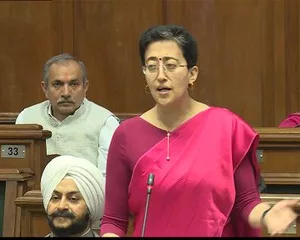New Delhi, March 1 (IANS) Delhi’s Gross State Domestic Product (GSDP) is projected to reach Rs 11,07,746 crore in the fiscal year 2023-24, reflecting a substantial 9.17 per cent growth from the previous year. The Delhi government’s Economic Survey 2023-24 highlights this progression, despite challenges posed by COVID-19.
The Economic Survey also notes Delhi’s contributions to the nation’s economy, with the city’s population accounting for 1.5 per cent of India’s total population, yet contributing nearly 3.9 per cent to the Gross Domestic Product (GDP). This showcases Delhi’s significant economic impact on the country.
An impressive achievement highlighted in the report is the surge in Per Capita Income, which has risen from Rs 3,76,217 in 2021-22 to Rs 4,61,910 in 2023-24, marking a notable 22 per cent increase within two years. Delhi’s per capita income now stands at 2.5 times the national average, indicating economic prosperity.
Delhi’s economic performance is also reflected in its management of inflation and unemployment, with the city maintaining a lower inflation rate compared to the national average. The unemployment rate has notably decreased from 6.3 per cent in 2020-21 to 1.9 per cent in 2022-23, demonstrating a positive trend in employment opportunities.
Furthermore, the report highlights Delhi’s commendable fiscal management, with tax collection witnessing an 18 per cent growth in 2022-23. The city recorded a substantial revenue surplus of Rs 14,457 crores during the same period, indicating effective financial management by the government. Despite providing various free government services, Delhi continues to maintain a growing economy and revenue surplus.
The report also showcases the impact of free government services on households, with a study revealing that almost all households have benefited from services such as free electricity, water, healthcare, and education. The study indicates different approaches by households in utilizing the savings from these services, reflecting the varied financial behaviors within the community.

 Euan Blair Net Worth 2024: How Much is Tony Blair’s Son Worth?
Euan Blair Net Worth 2024: How Much is Tony Blair’s Son Worth? David Copperfield Net Worth 2024: How Much is the Novel by Charles Dickens Worth?
David Copperfield Net Worth 2024: How Much is the Novel by Charles Dickens Worth? Noel Biderman Net Worth 2024: How Much is the Canadian Internet entrepreneur and business professional Worth?
Noel Biderman Net Worth 2024: How Much is the Canadian Internet entrepreneur and business professional Worth? Adam Selipsky Net Worth 2024: How Much is the CEO of Amazon Web Services, Inc. Worth?
Adam Selipsky Net Worth 2024: How Much is the CEO of Amazon Web Services, Inc. Worth? Ken Langone Net Worth 2024: How Much is the American Businessman Worth?
Ken Langone Net Worth 2024: How Much is the American Businessman Worth? Anthony Geisler, Xponential Fitness Founder and CEO Suspended “Indefinitely” Amid Fraud Allegations
Anthony Geisler, Xponential Fitness Founder and CEO Suspended “Indefinitely” Amid Fraud Allegations Navigating Forex Brokers: Choosing the Right Partner for Your Trading Journey
Navigating Forex Brokers: Choosing the Right Partner for Your Trading Journey Navigating the Complexities of MT4: A Comprehensive Guide for Beginners
Navigating the Complexities of MT4: A Comprehensive Guide for Beginners